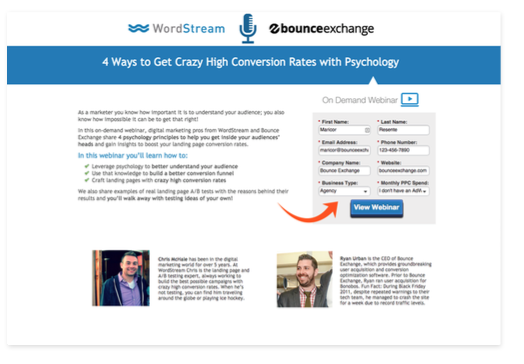
You’re probably a great decision maker when it comes to navigating life, going with your “gut” instincts, and creating serendipitous moments. But, if you’ve been trying to make conversion strategy your “6th sense,” you can stop today–your intuition has no place in conversion strategy.
It’s fine to take educated guesses on what you think will improve conversions, but make sure you make decisions and develop a philosophy based on actual evidence. Instead of leaving conversion improvement up to your gastric wiles, take a look at these 10 clumsy conversion mistakes to avoid at all costs:
1. You put people in your opt in overlays: If your visitors can’t identify with the face on the page, they will bounce. This holds true whether it’s a half naked model, or Johnny Depp. Humans just kill conversions.

Ad position: web_incontent_pos1
2. You don’t have a 2 step opt-in: Psychology experts have proven that once people commit to one small thing, they are more likely to say “yes” to the next request. Doing the “two-step” is always the safest best practice. (That goes for conversions and the dance floor).
3. You have too many distractions: Too much verbiage and imagery can make visitors feel like a squirrel in traffic. Get your call to action out. Everything else is irrelevant.
4. You underestimate your customers: Your visitors are pretty good at this whole shopping/browsing thing. After all, they navigate the internet’s minefield of scams and dud discounts every day. If your offer looks unrealistic (even if it’s true), the only clicking you will see will be on the exit button.
Ad position: web_incontent_pos2

5. You send visitors to your homepage: No one wants to read your “about me” section when they are searching for the red pumps you teased them with as they were browsing. Don’t deflate visitor excitement by making this rookie mistake.
6. You’re not conducting A/B tests: You need evidence. Tests provide hard data to help you make a decision. Sleep on A/B testing and you are right back to being a “gastric psychic”, with no way to explain your conversion strategy.
7. You aren’t directing your prospects: Arrows, flashing lights, caution tape… whatever you have to do to highlight the path for your customers, do it. Or don’t be surprised when they can’t find their way down your conversion funnel.

8. Your Call To Action buttons leave a lot to be desired: This is literally the most important element to your page–make it more exciting than “click here”. It’s okay if you are not sure what to go with–designing and testing different options will lead you in the right direction. Rock your visitor’s world with your CTA.
9. Your communications are scatterbrained: Remember the squirrel in traffic? Now he’s on Adderall. Implement a clear, concise, step-by-step guide for your prospect. No curveballs, no surprises, no unnecessary “traffic”.
10. You aren’t using testimonials the best way: You are too invested to be objective, and no one listens to those who sing their own praises. Bolster your claims with social proof, and you’ll make a believer out of them.
These are the hard facts. Billions of Bounce Exchange tests don’t lie. Ignore your gut and start making conversion decisions based on verifiable data that will lead to certifiable revenue. If you’re serious about chucking bad conversion habits in favor of effective ones, download this free guide for more examples of conversion killers and how to fix them immediately.
More from Digiday
Sliders test article
Agencies hope connected TV and digital out-of-home will play a bigger role in upcoming elections and politics — especially for smaller media agencies that are handling many of the less visible races in the crowded political space. For a number of media agencies looking to place their political ad dollars down in this major election […]

How CTV and DOOH are growing this political season for smaller agencies
Connected TV and digital out-of-home are playing a bigger role in upcoming elections and politics – especially for smaller agencies looking to place clients’ dollars.

CMO Strategies: Advertisers identify the top attributes on ad-supported streaming platforms
This is the third installment in Digiday’s multi-part series covering the top ad-supported streaming services and part of Digiday’s CMO Strategies series. In this report, we examine which ad attributes matter the most to marketers on streaming platforms.
Ad position: web_bfu